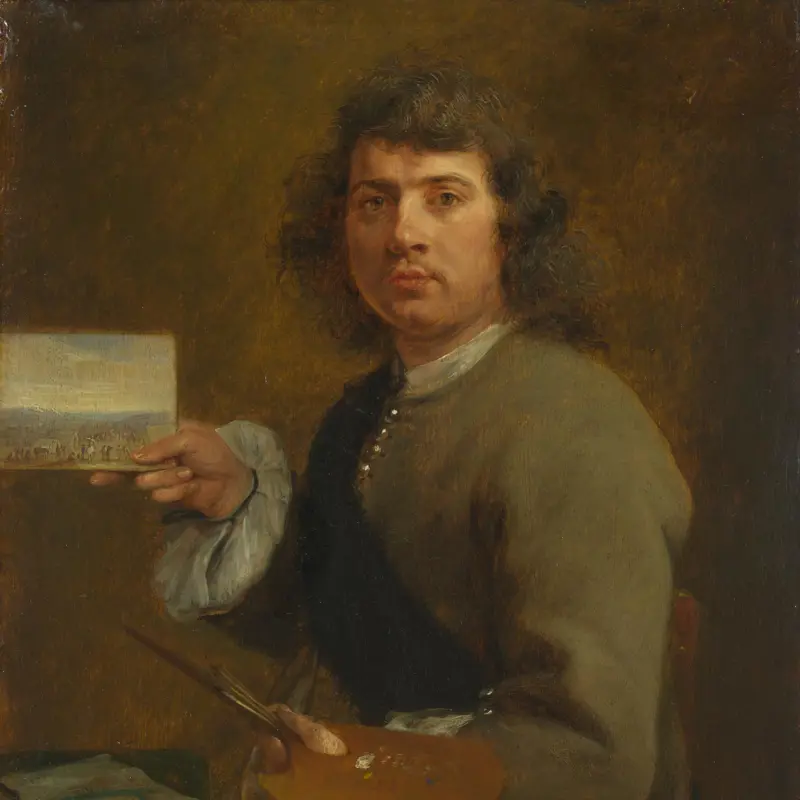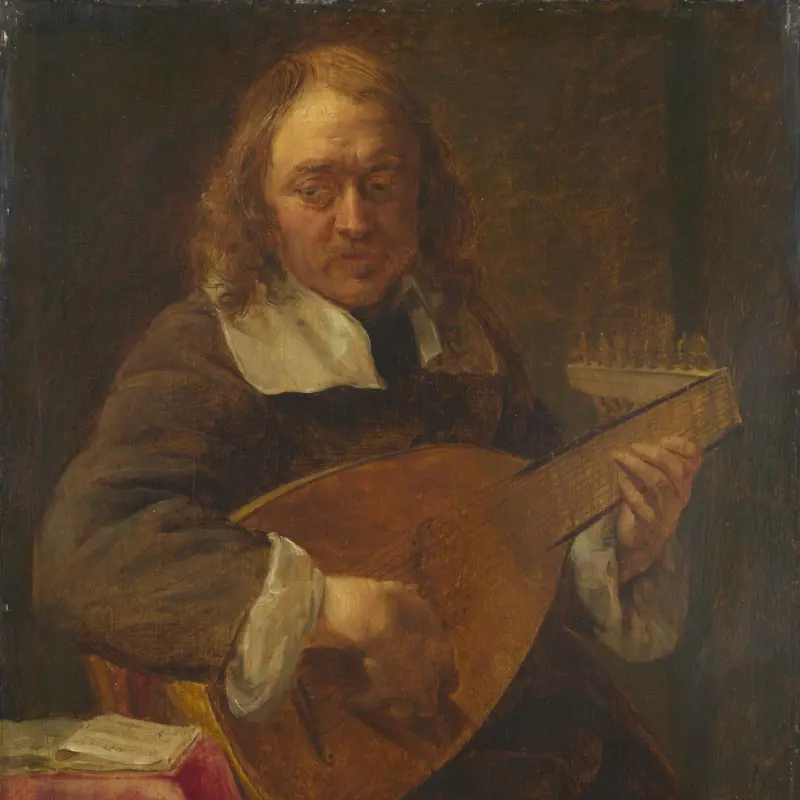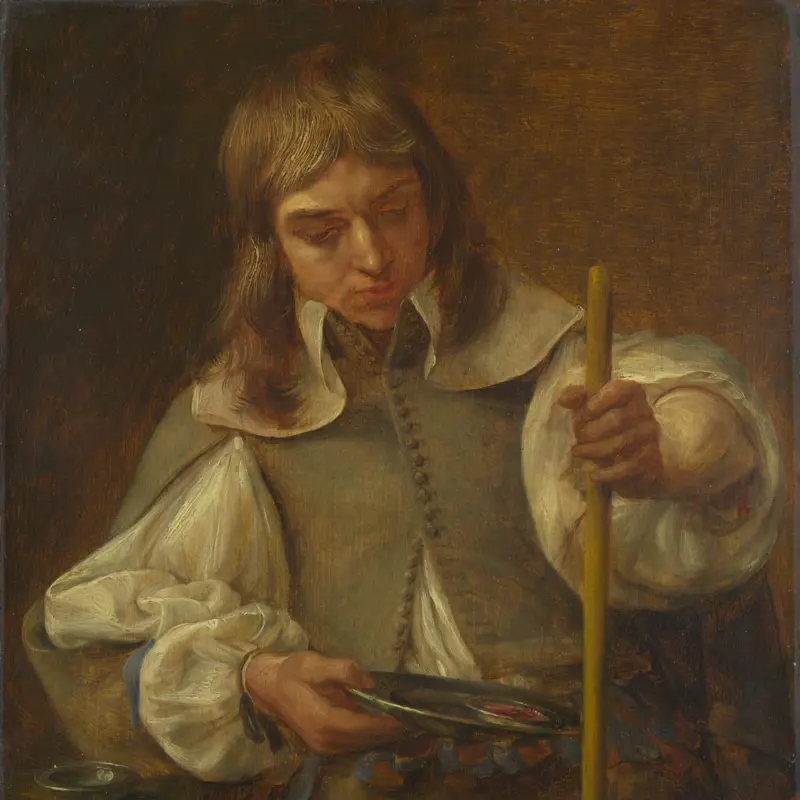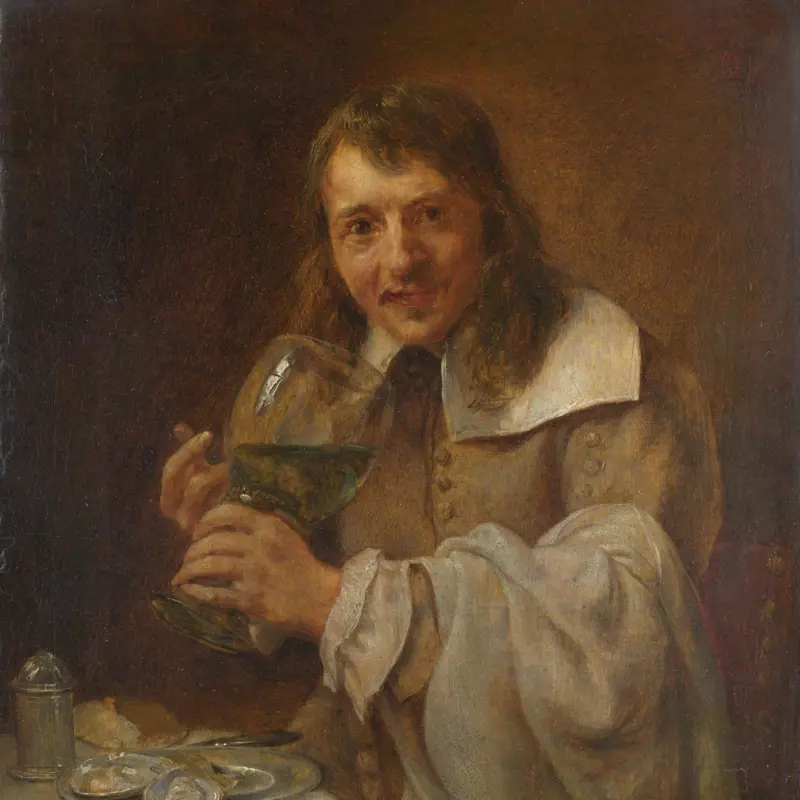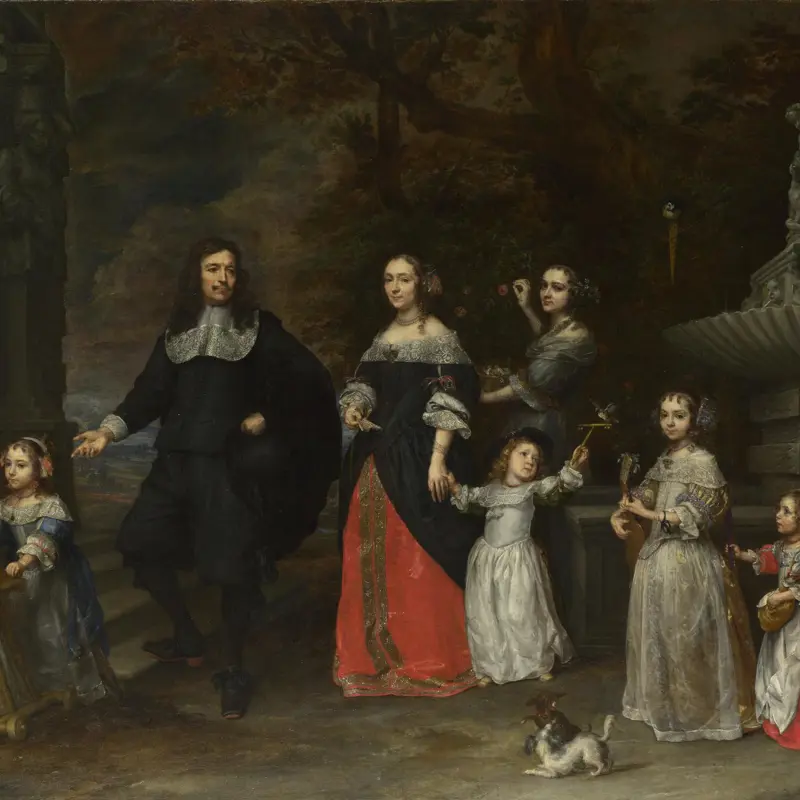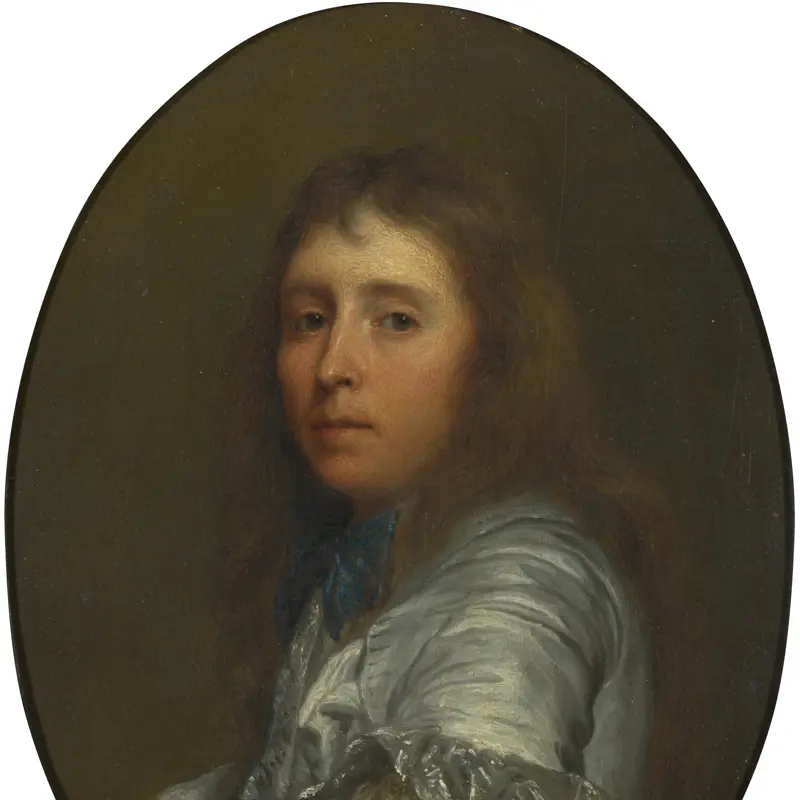After Gonzales Coques, 'Taste', after 1661
About the work
Overview
This is one of five paintings intended to hang together, each of which denotes one of the five senses – a common theme for painting in the Low Countries in the seventeenth century. In each of these paintings Gonzales Coques used a traditional activity to represent the relevant sense.
Here Taste is depicted as a smiling figure who is lifting an oversized rummer of wine and seems to be gesticulating to indicate his enjoyment of the prospect of drinking it. Some bread and a plate of oysters – standard fare in the taverns of the time – sit on the table in front of him.
Each sense is also a real portrait. We don’t know who this is, but as three of the other paintings in the series are artists, this man may be one too. Some have speculated that it could be a self portrait, but there’s no evidence for this. This painting is probably a copy after a lost original.
Key facts
Details
- Full title
- Taste
- Artist
- After Gonzales Coques
- Artist dates
- 1614/18 - 1684
- Part of the series
- The Five Senses
- Date made
- after 1661
- Medium and support
- oil on wood
- Dimensions
- 25.3 × 19.4 cm
- Acquisition credit
- Bought, 1882
- Inventory number
- NG1118
- Location
- Not on display
- Collection
- Main Collection
Provenance
Additional information
Text extracted from the ‘Provenance’ section of the catalogue entry in Gregory Martin, ‘National Gallery Catalogues: The Flemish School: circa 1600–circa 1900’, London 1986; for further information, see the full catalogue entry.
Bibliography
-
1986Martin, Gregory, National Gallery Catalogues: The Flemish School, circa 1600 - circa 1900, London 1986
-
2001
C. Baker and T. Henry, The National Gallery: Complete Illustrated Catalogue, London 2001
About this record
If you know more about this work or have spotted an error, please contact us. Please note that exhibition histories are listed from 2009 onwards. Bibliographies may not be complete; more comprehensive information is available in the National Gallery Library.
Images
About the series: The Five Senses
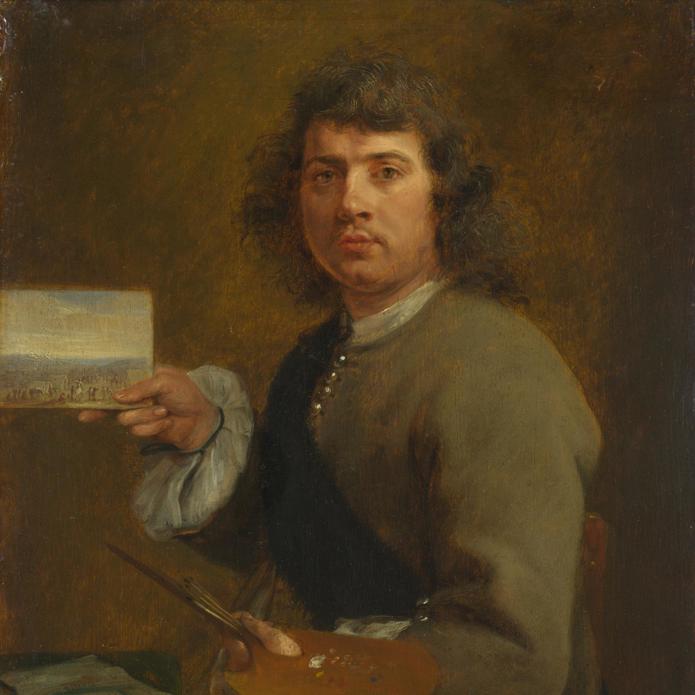
Overview
This is a series of five small pictures which represent the senses: taste, touch, hearing, smell and sight. Many paintings on this theme were made in the Low Countries in the seventeenth century, and Gonzales Coques painted the series more than once.
A man engaged in a relevant activity represents each sense – Hearing, for example, is a musician. The figures appear to be portraits and, while we can't now identify them all, it may be that each picture shows an artist. All those that have been identified depict contemporary painters or sculptors – the figure of Sight is a portrait of Robert van den Hoeke (1622–1668), a painter who worked in Antwerp.
The pictures appear to have been designed to hang in a particular way. Two men face to the right, two to the left; one – Touch – sits facing the viewer, and was presumably intended to be hung as the central image flanked by the others.

